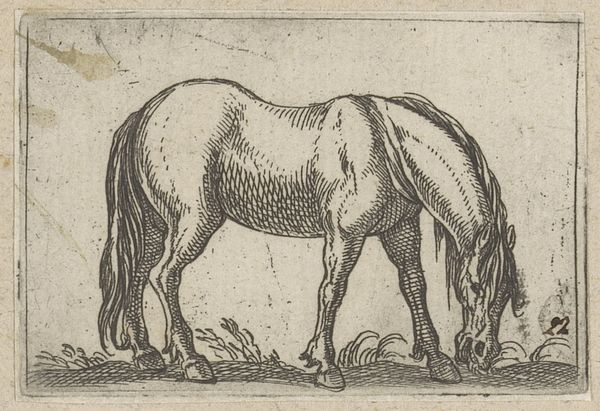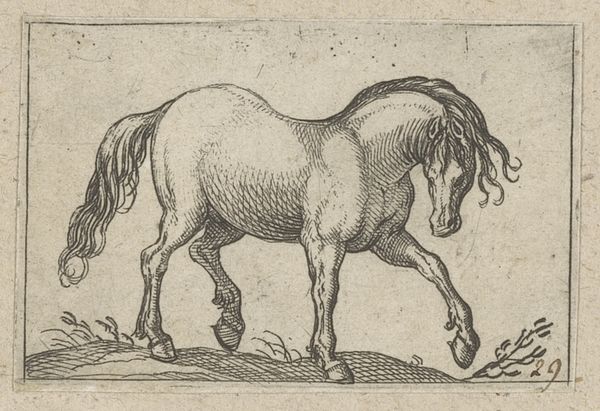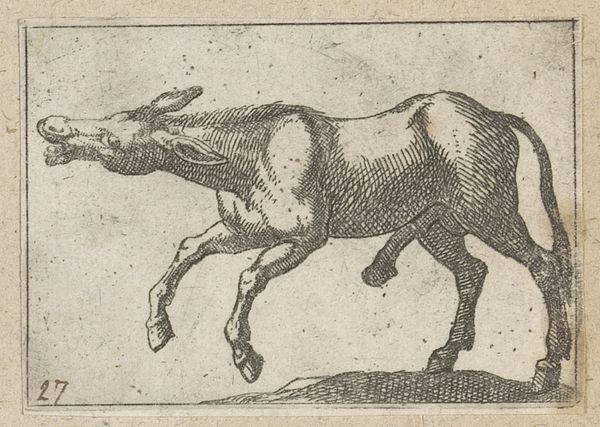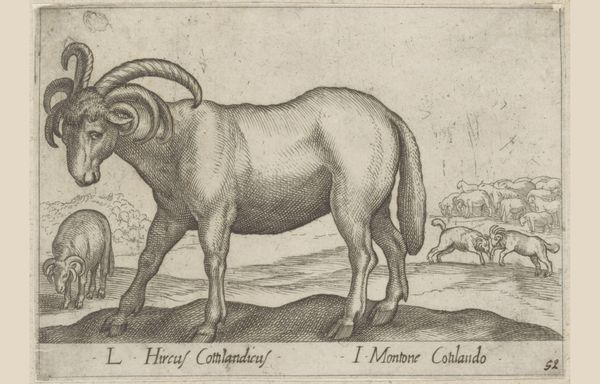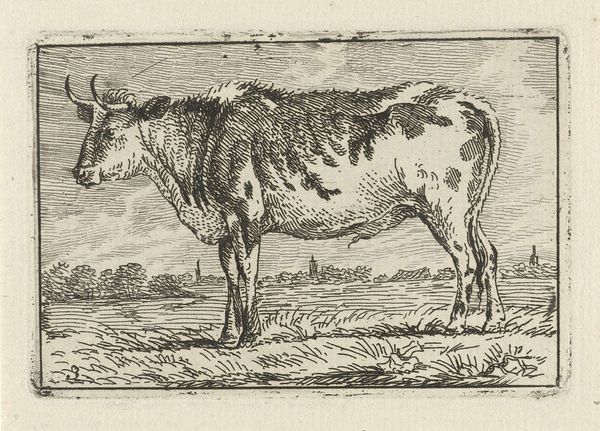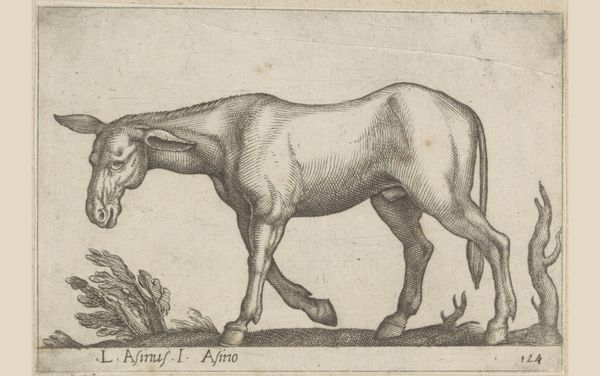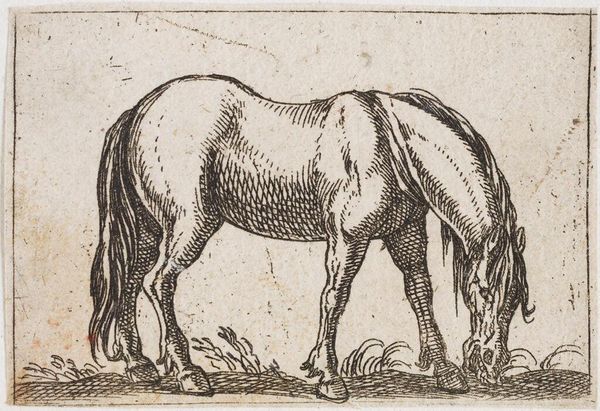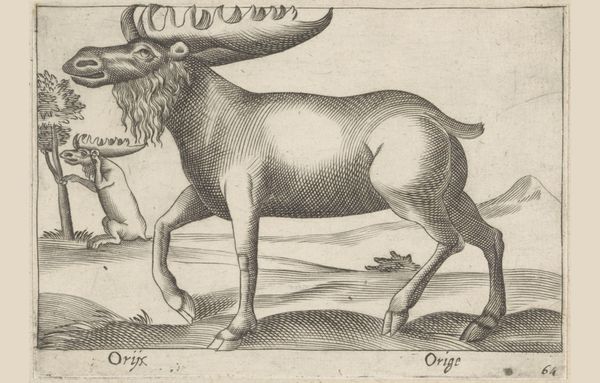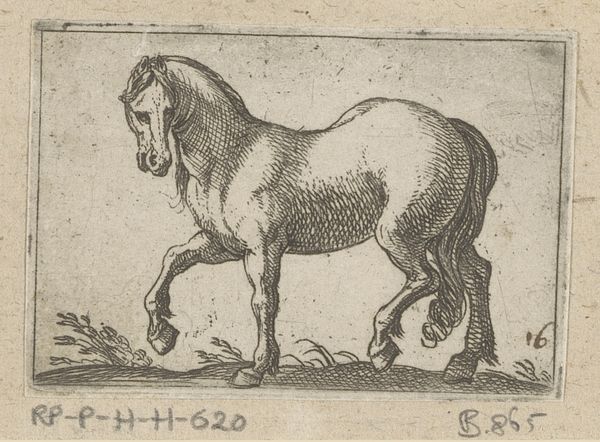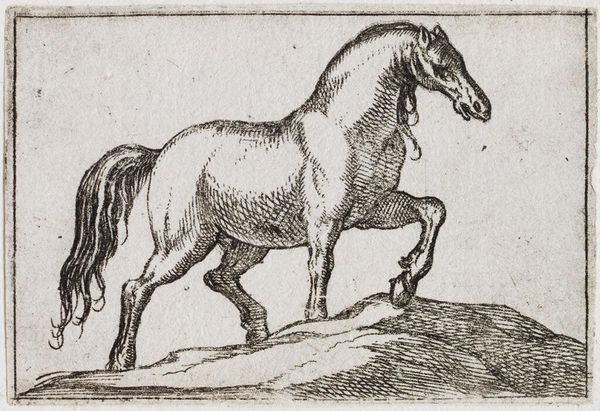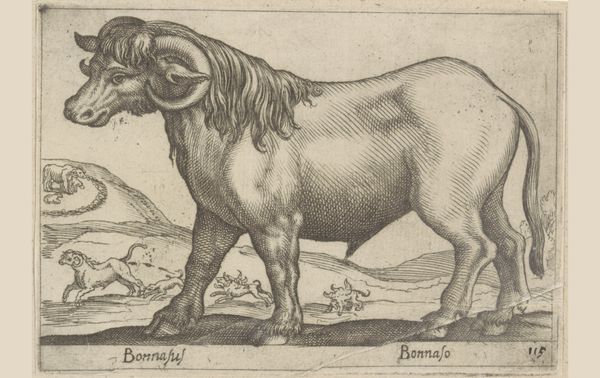
print, engraving
#
allegory
#
baroque
# print
#
figuration
#
line
#
history-painting
#
engraving
Dimensions: height 95 mm, width 137 mm
Copyright: Rijks Museum: Open Domain
Editor: Here we have Antonio Tempesta's "Rund," made before 1650. It's an engraving, currently residing in the Rijksmuseum. The creature depicted, identified as a "Catoblepa," appears quite menacing. What visual cues do you see that amplify its frightening nature? Curator: The Catoblepas. Note how Tempesta chose to depict this mythological creature: a monstrous ox whose gaze brings instant death. This is far from your average farm animal! Consider its single, cyclopean eye peeking through its mane; this immediately evokes classical myths and folklore about dangerous, uncivilized creatures lurking at the edges of the known world. Editor: Interesting! So the single eye adds to that sense of “otherness?" Curator: Precisely. Furthermore, observe how the diminutive human figures are prostrated before it—an instant tableau of death. Do you notice the little dog at the right? It doesn't seem phased. It could be implying something allegorical, like innocence surviving bestiality, or perhaps even a critique of the fearmongering surrounding such creatures. Editor: I hadn't thought about the contrast between the dog and the dead humans! That is insightful! It makes me wonder about how people might have interpreted animal symbolism back then. Curator: That interplay of classical symbols with moral messages reflects a wider cultural preoccupation with controlling our fears and base instincts. These prints were meant to be circulated and inspire discussion about humans in their "natural state." It is also the continuity of symbol over time: The Greeks feared the evil eye. How much is passed down culturally and individually? Editor: Wow. I initially saw just a strange image, but now it’s clearly embedded in broader cultural anxieties. I’ll certainly remember to look closer at symbolic relationships moving forward. Curator: Indeed. Understanding such imagery opens doors to deeper interpretations and an enhanced grasp of cultural memory itself.
Comments
No comments
Be the first to comment and join the conversation on the ultimate creative platform.
